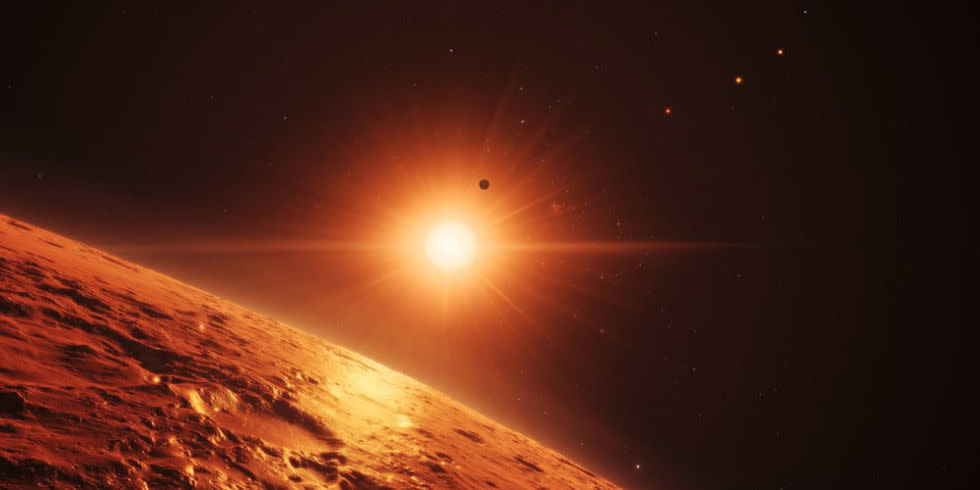When Can I Reserve My Ticket?

I say we immediately dispatch the Nomad probe to get in touch with someone Out There that might have some ideas to get us out of this mess. NASA's done what NASA does again, and we all can exult in all this winning.
NASA's Spitzer Space Telescope has revealed the first known system of seven Earth-size planets around a single star. Three of these planets are firmly located in the habitable zone, the area around the parent star where a rocky planet is most likely to have liquid water. The discovery sets a new record for greatest number of habitable-zone planets found around a single star outside our solar system. All of these seven planets could have liquid water – key to life as we know it – under the right atmospheric conditions, but the chances are highest with the three in the habitable zone. This exoplanet system is called TRAPPIST-1, named for The Transiting Planets and Planetesimals Small Telescope (TRAPPIST) in Chile. In May 2016, researchers using TRAPPIST announced they had discovered three planets in the system. Assisted by several ground-based telescopes, including the European Southern Observatory's Very Large Telescope, Spitzer confirmed the existence of two of these planets and discovered five additional ones, increasing the number of known planets in the system to seven.
In my experience with Trappists, we can expect to find there peaceful, quiet, and devout civilizations that make terrific jellies and jams. Also, beer! The news can still amaze and astound.
Respond to this post on the Esquire Politics Facebook page.
You Might Also Like

